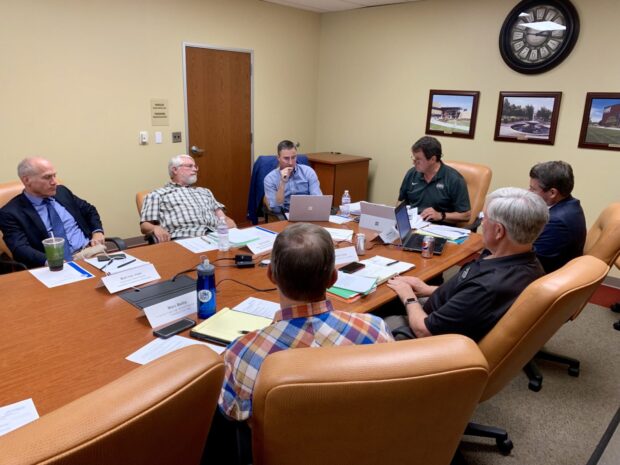Likely foreshadowing future legislative debates, a subcommittee of Gov. Brad Little’s K-12 education task force focused Monday on prioritizing resources and shoring up savings reserves in an environment of budget competition and uncertainty.

Along the way, the K-12 budget stability subcommittee of the “Our Kids, Idaho’s Future” task force began to piece together some potential recommendations that could be brought to the full task force this fall.
“Recognizing we don’t have an unending pool of money, we’re ultimately going to have to make some tradeoffs,” said Kurt Liebich, the RedBuilt CEO who chairs the K-12 budget stability subcommittee.
The subcommittee discussed six potential recommendations.
- Develop basic budget parameters and a three- to five-year budget forecast to predict state revenues and establish an expectation for the amount of funding available for K-12 public schools.
- Prioritize strengthening the K-12 rainy day savings account, the Public Education Stabilization Fund, to help protect schools in the event of an economic slowdown. In order to cover unmet expenses and deal with enrollment increases, the state spent down its education savings account by more than $30 million in the most recent budget year. That dropped the account’s balance down to $62.2 million.
- Wait for a teacher pipeline subcommittee to develop recommendations regarding the career ladder salary program, the master educator premiums and the leadership premiums.
- Maintain funding for budget earmarks, known as line items, for items that create a statewide benefit. Examples included. Transportation, bond levy equalization and Idaho Digital Learning Academy. Technology was debated as well.
- Maintain line items that tie directly to the task force’s two strategic priorities of early literacy and college and career readiness. Examples included the literacy initiative, college and career counseling, advanced opportunities.
- “Collapsing” the remaining line items into discretionary funds to give districts more flexibility in local, strategic initiatives.
“Everything we talked about today costs money and we have to sort of understand, when you roll all this up, what does it look like?” Liebich said.
Notably, the subcommittee did not propose a recommendation for or against changing to the public school funding formula. After three years of ramping up through an interim committee, the 2019 Legislature debated changing Idaho’s public school funding formula but failed to get a bill out of committee.
Bill Gilbert, the Boise businessman who serves as co-chair of the full K-12 task force, said the task force will remain silent on the funding formula debate this year.
Last week, the full task force and a teacher pipeline subcommittee also began developing potential recommendations.
- The full “Our Kids, Idaho’s Future” task force meets Sept. 13 in Pocatello.
- The K-12 budget stability committee is likely to have two more meetings, Sept. 18 and Sept. 27, Liebich said.
